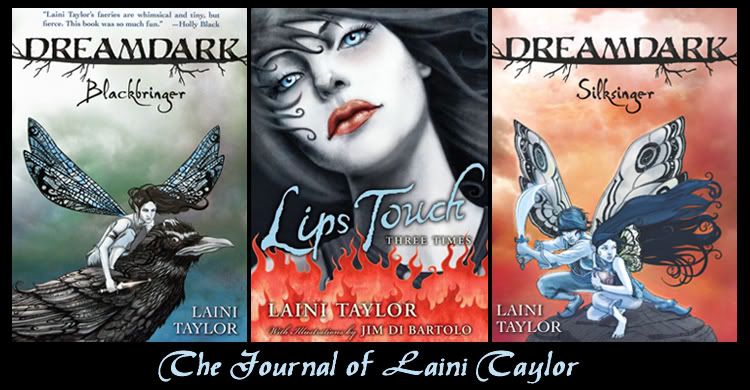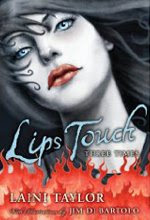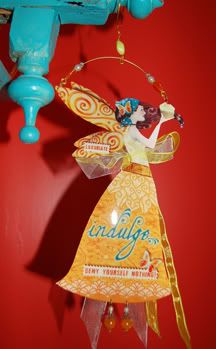[part I of PLOT -- What is Plot? HERE]
I argued last time that your readers' basic needs (akin to food, shelter, and love) are: connection, enjoyment, and satisfaction. So what does this have to do with plot? Well, while you craft your plot, you are trying to meet those needs.
First, let's take connection. For connection, you need, foremost, a character or characters to care about, and better yet: a character who your reader wants to be. I think that the most beloved books are the ones that do this most effectively; they also end up getting the most fan fiction, because the readers want back into the world and the character so badly they’ll take themselves there if they have to. Take Pride and Prejudice. Why are there so many literary sequels? Because women want to be Elizabeth Bennet, and be loved by Mr. Darcy. To be passionately loved by someone amazing, that is a prime fantasy to tap into to make a connection with your reader.
Another is the "unlikely hero". Harry Potter, Frodo Baggins, two beloved fantasy characters: both seemingly small and powerless, and both proving, over the course of excellent plots, that they are equal, against all expectation, to the extraordinary role that Fate has thrust upon them. For any reader this is heady. For children, quintessentially small and powerless, this is a dream they will want to inhabit.
So strive to create characters who readers will want to be. Think about the things that have this effect on you as a reader. What are they? What are the set-ups, the situations, the character-types? My ultimate wish as a writer is to write books that readers yearn to climb inside of, and the first and most direct way to do this is through a potent connection with character.
There is a saying, “Character is plot, and plot is character.” I don't know who said it, but wherever it comes from, it’s true. I said before that plot is: your characters living their way through the story.
To take that to the next level, your plot is created and driven by your characters’ desires and actions, so one of the most elemental things to a strong plot is:
What do your characters want? It is essential that they be driven by a powerful motivation. I took a workshop with the writer Dan Greenburg at an SCBWI conference, and he said, “Characters must have a desperate goal that is continually thwarted.” And he said, “Never let your character forget his motivation or stop acting on it. And, never stop blocking him. The author is a rascal, rooting for his protagonist even while thwarting him.”
Out of your characters’ motivations, and the things you cook up to thwart them, you build your plot.
Here is a secret: When you have fully realized characters with genuine motivation, plot happens naturally!
(Really. It's so cool.)
And here’s something to consider. In all of my books and stories so far, it is not the motivation of the protagonist that creates the plot. It is the motivation of the antagonist. In adventure, horror, and fantasy that’s often the case. In other genres, maybe less so. The villain wants something and sets about getting it, or making it happen. The main character wants the opposite, and here you have another essential element of every plot:
Conflict.
You must have a compelling conflict. What is it? Who wants what, and what’s in the way? In Harry Potter, Voldemort wants to return, and Harry must thwart him. In the Lord of the Rings, Sauron wants to return, and Frodo must thwart him. You see there, at the most basic level the plot is the same, it’s what you do with it that turns it into a novel.
In Pride and Prejudice the plot is protagonist-driven. The two eldest Bennett sisters hope to marry well and also for love (that’s their motivation), and all manner of things thwart them, including themselves (conflict), until at last they get a happy ending (conclusion). One of those lists of basic plots claims seven basic plots, and they are: Man vs. Nature, Man vs. Man, Man vs. the Environment, Man vs. Machines and Technology, Man vs. the Supernatural, Man vs. Self, and Man vs. God/Religion. What all of those plots have in common is the versus. They all hinge on conflict.
What is your conflict? Know it, develop it, make sure it’s compelling and believable and strong enough to build your entire novel on, because it’s your foundation.
I’d been working on Blackbringer for a few months, maybe, and I didn’t know exactly where it was going. I was still figuring out the plot and my intentions and I was flailing a little. I realized I hadn’t decided on a conflict, and once I zeroed in on that, and put my mind to that, everything started to click into place.
I said earlier that the readers’ basic needs are: connection, enjoyment, and satisfaction. Character motivation and conflict are integral to all three of these things.
—Your connection with your character depends upon believing in the motivation and being compelled by the conflict.
—enjoyment comes from losing yourself in an exciting and rich tale, which is driven by the ups and downs of conflict.
—and satisfaction is the result of a denouement, or resolution of conflict, in which the characters get or don’t get what they want. The denouement is the events after the climax and before the actual ending. In Blackbringer and Silksinger I have classic denouements, with the large cast of characters being dealt with in turn, a sort of: where are they now and where are they headed? I had great fun writing those parts. The tricky business of the climax was past, now I got to play, and a big part of the play is the pleasure of giving the readers what they want (or at least most of it), that sense of satisfaction that makes them close a book with a feeling of yum. That heavy-lidded, just ate a delicious meal yum.
But here I am leapfrogging ahead to endings before I have talked about beginnings and middles! So, next up: Structure. Next time!
* * *
[sidebar on scene-craft]
Crafting the Reader's Experience
There’s a handful of questions I keep in mind as I’m writing, and they pertain to the reader’s experience at any given moment. As a writer, you are crafting the reader’s experience, every step of the way, and these are things I ask myself in an effort to keep the reader where I want them.
The questions are:
—What do I want my reader to know?
How much information am I doling out to them? Every single thing they think and feel while reading is shaped by me. Do they understand fully what’s going on, or are they only seeing a mysterious piece of it? Do they know more or less than the character knows, or do they know exactly what the character knows? This is something to play with for effect. When the reader knows something the character doesn’t, or vice versa, you can use that to build suspense.
—What do I want the reader to wonder?
What is the mystery or suspense at this particular moment? What is keeping them turning the pages? There must always be unanswered questions and/or unresolved narrative threads. I read a book recently, a bestselling thriller called The Girl Who Played With Fire, and there was a mention early on of an incident in the protagonist’s childhood that she referred to only as "All the Evil," and you don’t know what it is, and you really really want to find out, and it isn’t revealed until very late in the book. And that is one of the ways an author keeps you turning pages, with a mystery.
Always remember: if you’re gearing up to resolve one of your page-turner mysteries, or if you’re tying up a suspense thread before the end of the book, you have to introduce new ones first, or you lose your grip on the reader. It’s like you have them on a fishing line and you’ve been steadily reeling them in and reeling them in and then bam, just like that you let them go flopping back out again. You must keep them wondering, keep them reeled in. Never give them an easy place to stop reading.
—What do I want the reader to hope for?
What does the protagonist want? The reader needs to be manipulated into wanting it too.
—What do I want them to fear?
What is at stake? Something must be at stake. In Pride and Prejudice, what’s at stake is Lizzy’s entire future. Will she be lucky enough to marry for love? In Harry Potter and Lord of the Rings, we fear the death of beloved characters, and bigger than that, we fear the ascendancy of true evil. Whatever is at stake, it must loom over your novel, like a shadow when a cloud drifts in front of the stun, and all your scenes must be crafted so the reader remains ever-mindful of its presence.
These questions are about scene-craft. You want to be in conscious control of everything your reader thinks, feels, knows, wonders, hopes for, and fears.
[end sidebar]
* * *
Remember: The secret is that once you have a fully realized character with genuine motivation, plot happens naturally!
[part III of PLOT -- Structure HERE]
Subscribe to:
Post Comments (Atom)









12 comments:
This is fantastic, Laini - some of the best crystallized advice on writing I've read in a long time! Thanks so much for sharing it here.
wow, that is great advice. thanks so much, i appreciate it.
As always Laini, wonderful advice! There is something about the way you talk about writing that just makes it *click* into my head.
Great post, I just came across your blog from a RT on #yalitchat.
I am going to link back to your blog post it really is great advice.
Wow, this was super helpful! Thank you so so much for posting this. It really was just what I needed to hear right now, what with all the flailing I> have been doing with my writing. Thank you for being awesome!
Great post Lani, thanks! I tend to have problems with plot so this was really helpful.
Great advice! Thanks for posting your notes!
"It is the motivation of the antagonist."
Well said. This paragraph helped me more than you can imagine.
Shelley
Thank you for sharing your writing wisdom with us Laini, I have been enjoying it and I can always use good writing advice.
-Sequoia
Yummy stuff Laini. Thank you for sharing your talent.
b
I find it funny that just a few months ago, I got similar advice on character motivations from my writer's group. Thanks for posting these! They're great reads and really helpful.
Oh, this post is even better than the first one. You've given me a few things to figure out.
Post a Comment